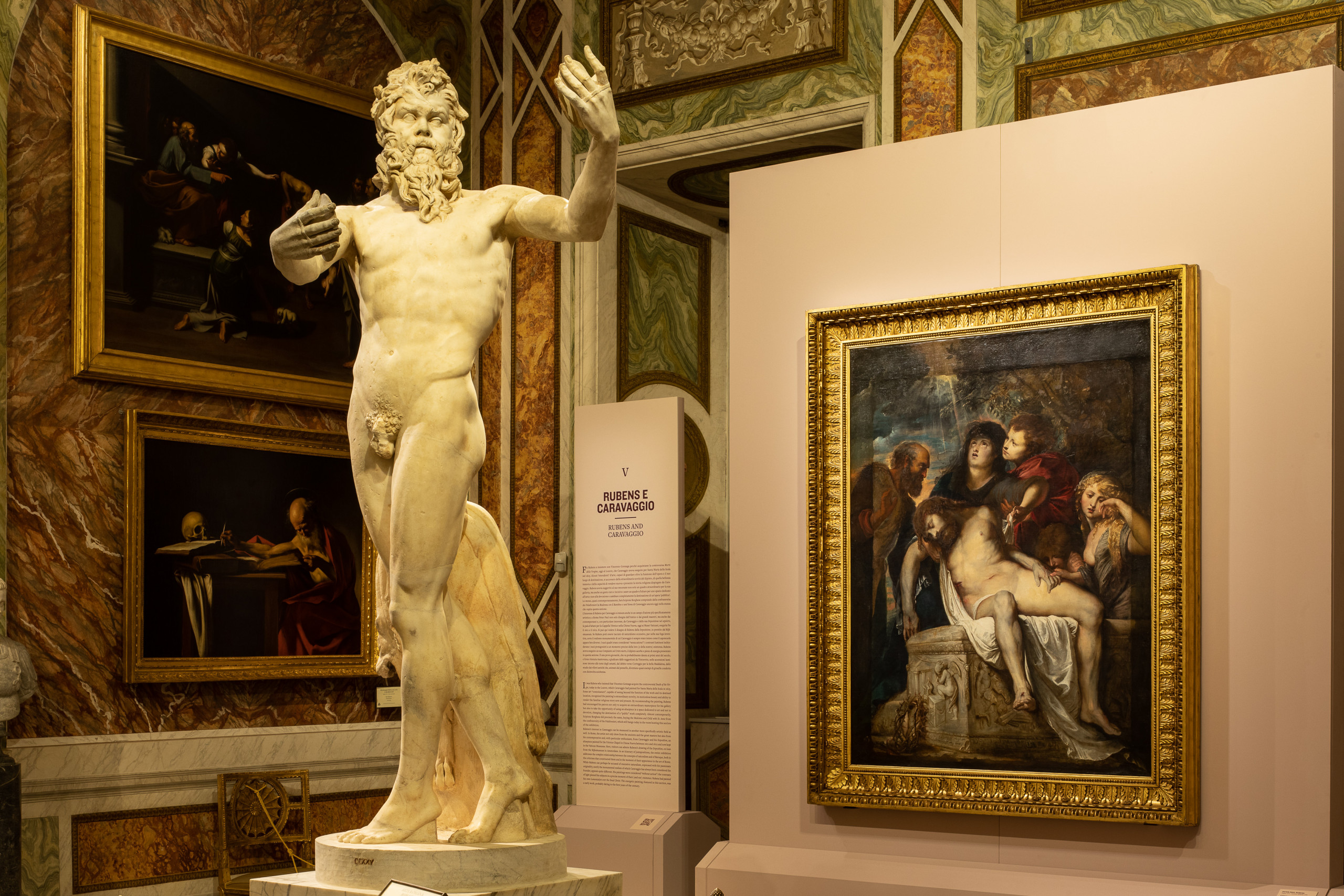RUBENS AND CARAVAGGIO

It was Rubens who insisted that Vincenzo Gonzaga acquire the controversial Death of the Virgin, today in the Louvre, which Caravaggio had painted for Santa Maria della Scala in 1605. Some art “connoisseurs”, capable of seeing beyond the function of the work and its destined location, recognized the painting’s extraordinary novelty, its motionless beauty and ability to render the familiar religious story new and present. By recommending the painting, Rubens had encouraged his patron not only to acquire an extraordinary masterpiece for his gallery but also to take the opportunity of using an altarpiece in a space dedicated to art and not to devotion, changing the destination of a “public” work completely. Al- most contemporarily, Scipione Borghese did precisely the same, buying the Madonna and Child with St. Anne from the confraternity of the Palafrenieri, which still hangs today in the room hosting this section of the exhibition.
Rubens’s interest in Caravaggio can be measured in another more specifically artistic field as well. In Rome, the artist not only drew from the ancients and the great masters but also from his contemporaries and, with particular enthusiasm, from Caravaggio and his Deposition, an altarpiece painted for the Vittrice Chapel in Chiesa Nuova between 1601 and 1602 and now kept in the Vatican Museums. Here, visitors can admire Rubens’s drawing of the Deposition, on loan from the Rijksmuseum in Amsterdam. In an itinerary of juxtapositions, the entire exhibition addresses the complex relationship between the concepts of naturalism and of Baroque, both in the criticism that constructed them and in the moment of their appearance in the art of Rome.
While Rubens can perhaps be accused of excessive naturalism, expressed with his passionate originality, surely the monumental realism of which Caravaggio has always been considered the founder, appears quite different. His paintings were considered “without action”: the contrasts of light pinned his subjects in a precise moment of their (and our) existence. Rubens had painted his own Lamentation over the Dead Christ. The energetic painting, featured in this section, was a early work, probably dating to the first years of the century.